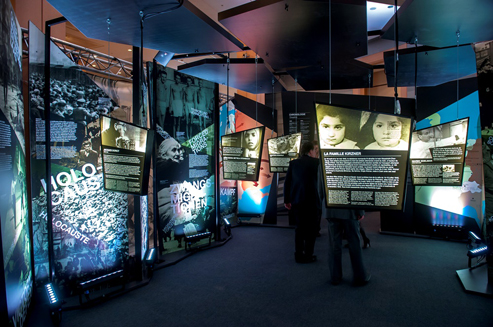The team includes partners from the Netherlands, Germany, Britain and France (including Mémorial de Caen, Allied Museum in Berlin and the Arnhem Nijmengen Region Tourist Office). The project will develop Liberation Route Europe, a historical-tourist trail, which already runs through the Netherlands, Belgium and Germany and shows the Allied armies’ advance in 1944–1945. The main task of the project is to keep the memory of the shared European history alive, commemorate the most tragic experience encountered by Europeans in the 20th century and thereby to strengthen Europe’s identity.
Extending the trail and including partners from other European countries, Poland among them, will spread knowledge about the Second World War and about the experiences of people living through it in different parts of Europe and support international tourism, promote shared historical and cultural heritage, particular towns and regions. By combining active tourism and historical education with new technologies (mobile applications), Liberation Route Europe is reaching out to younger generations. One of the goals of the Museum of the Second World War is to show that in 1945 not all of Europe became free: for Poland and the rest of East-Central Europe, the end of the war brought a new Soviet domination.
The project began in September 2013 and will take 18 months to complete. Launching of the Liberation Route Europe website is planned in June this year.
The cooperation between museum specialists and historians who met to work on this project also created the exhibition ‘Routes of Liberation. European Legacies of the Second World War’. It recounts the causes, history and complex heritage of the Second World War and its consequences for Europe, which, as a result of the war, was split by the Iron Curtain. The exhibition is told in five languages, English, German, French, Dutch and Polish, and it will be put on by all the partner institutions. It was officially opened on 13 February 2014 in the European Parliament, and its president, Martin Schulz, took part.
The exhibition will visit Poland in the first half of 2015 and it will be shown in Warsaw and Gdańsk.
Photo © Jan Van de Vel/Liberation Route Europe Foundation
More information on: Museum of the Second World War


